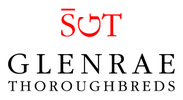Thoroughbred breaking is a delicate dance of trust, training and timing. For those embarking on this journey, a successful outcome hinges on understanding potential pitfalls. Let's unveil the common mistakes during the breaking process and tips to avert them, curated by the experts at Glenrae Thoroughbreds.
1) Rushing the Process
Thoroughbred breaking is an intricate art. Viewing it as a race can compromise the process. While every trainer wishes to see quick results, applying undue pressure can disrupt a horse's learning. Embracing patience acknowledges that each horse, like humans, has its own learning speed and rhythm.
2) Neglecting Individual Needs
No two thoroughbreds are alike. Each boasts its own personality, traits and learning capabilities. A generic training approach may not resonate with every horse, potentially leading to setbacks and unutilised potential.
3) Inconsistent Training Regimes
A well-structured routine is paramount. Horses, much like people, find comfort in consistency. Erratic training sessions can muddle a horse's understanding, causing unnecessary delays and confusion in their breaking progression.
4) Overlooking Safety Precautions
Safety transcends all. Ensuring both the horse and handler are secure is non-negotiable. Relying on subpar equipment or skipping essential safety protocols can have dire consequences, often preventable with due diligence.
5) Missing Out on Bonding
The foundation of successful breaking lies in trust. By investing time in forming a genuine connection with the horse, trainers can foster an environment conducive to effective learning. A horse that trusts its handler is more receptive and adaptable.
6) Ignoring Signs of Distress
Awareness is pivotal. Horses communicate through their behaviour, and any signs of distress or discomfort warrant immediate attention. By addressing concerns head-on, trainers can ensure the well-being of the thoroughbred and the effectiveness of the training.
7) Failing to Seek Expertise
Experience speaks volumes. Even if one has years in the field, consulting with seasoned professionals can offer invaluable insights. At Glenrae Thoroughbreds, our expertise has been honed through countless breaking sessions, ensuring we're equipped to address a myriad of challenges.
8) Neglecting Post-Breaking Care
The breaking journey doesn't culminate with the horse's initial training. To guarantee the thoroughbred's ongoing health and preparedness for future tasks, consistent evaluations, training adjustments, and dedicated care are indispensable.
Navigating the nuances of thoroughbred breaking requires a blend of knowledge, patience, and intuition. At Glenrae Thoroughbreds, we're dedicated to ensuring that the breaking process is a rewarding experience for both horse and owner. To learn more about how we can guide you and your thoroughbred through this transformative journey, explore our thoroughbred breaking services and get in touch.
Thoroughbred breaking is an intricate art. Viewing it as a race can compromise the process. While every trainer wishes to see quick results, applying undue pressure can disrupt a horse's learning. Embracing patience acknowledges that each horse, like humans, has its own learning speed and rhythm.
2) Neglecting Individual Needs
No two thoroughbreds are alike. Each boasts its own personality, traits and learning capabilities. A generic training approach may not resonate with every horse, potentially leading to setbacks and unutilised potential.
3) Inconsistent Training Regimes
A well-structured routine is paramount. Horses, much like people, find comfort in consistency. Erratic training sessions can muddle a horse's understanding, causing unnecessary delays and confusion in their breaking progression.
4) Overlooking Safety Precautions
Safety transcends all. Ensuring both the horse and handler are secure is non-negotiable. Relying on subpar equipment or skipping essential safety protocols can have dire consequences, often preventable with due diligence.
5) Missing Out on Bonding
The foundation of successful breaking lies in trust. By investing time in forming a genuine connection with the horse, trainers can foster an environment conducive to effective learning. A horse that trusts its handler is more receptive and adaptable.
6) Ignoring Signs of Distress
Awareness is pivotal. Horses communicate through their behaviour, and any signs of distress or discomfort warrant immediate attention. By addressing concerns head-on, trainers can ensure the well-being of the thoroughbred and the effectiveness of the training.
7) Failing to Seek Expertise
Experience speaks volumes. Even if one has years in the field, consulting with seasoned professionals can offer invaluable insights. At Glenrae Thoroughbreds, our expertise has been honed through countless breaking sessions, ensuring we're equipped to address a myriad of challenges.
8) Neglecting Post-Breaking Care
The breaking journey doesn't culminate with the horse's initial training. To guarantee the thoroughbred's ongoing health and preparedness for future tasks, consistent evaluations, training adjustments, and dedicated care are indispensable.
Navigating the nuances of thoroughbred breaking requires a blend of knowledge, patience, and intuition. At Glenrae Thoroughbreds, we're dedicated to ensuring that the breaking process is a rewarding experience for both horse and owner. To learn more about how we can guide you and your thoroughbred through this transformative journey, explore our thoroughbred breaking services and get in touch.

 RSS Feed
RSS Feed